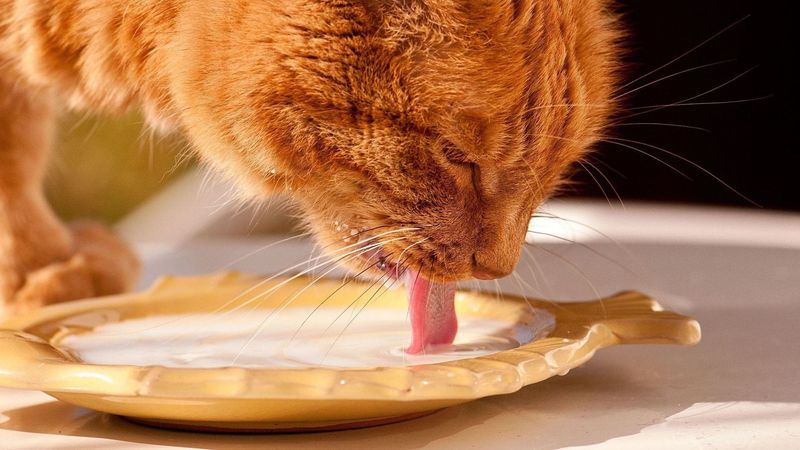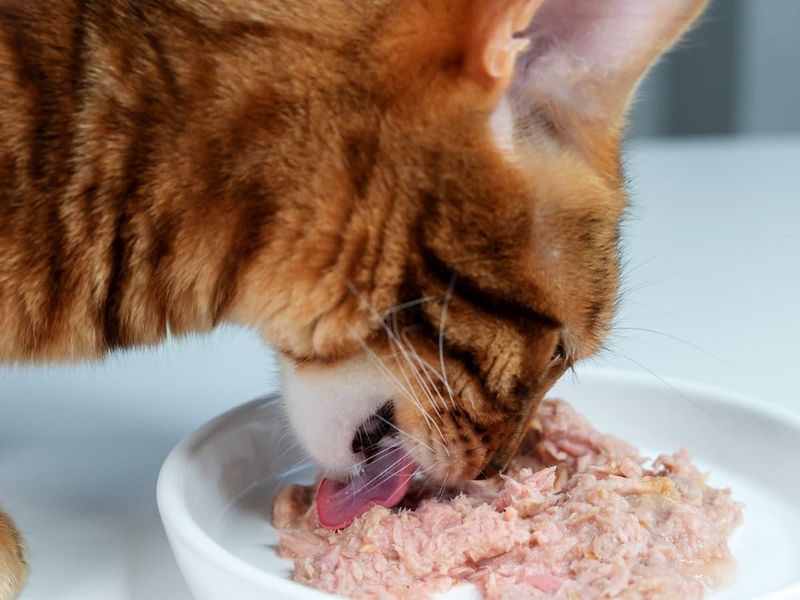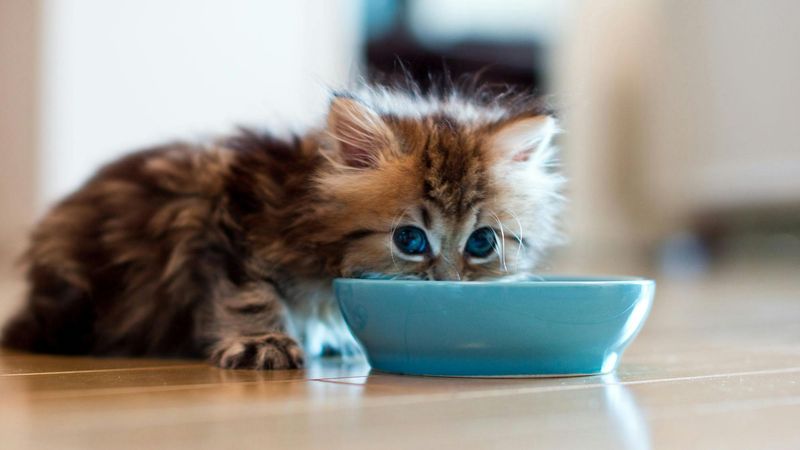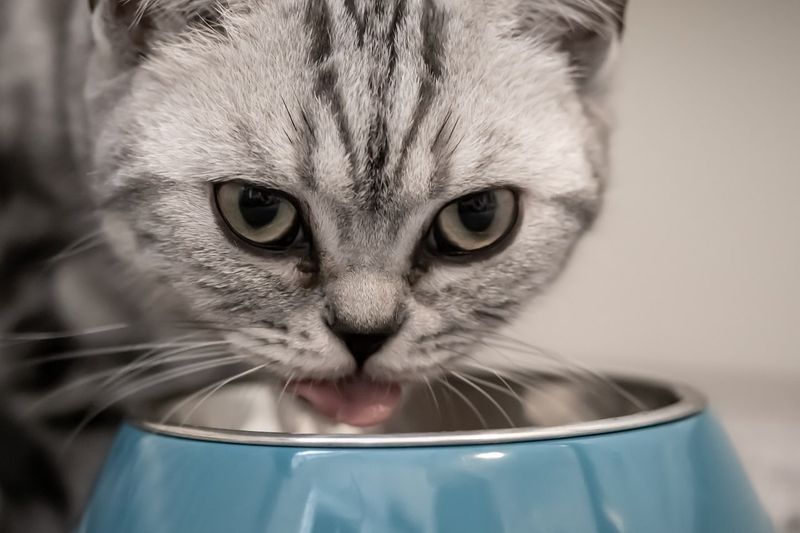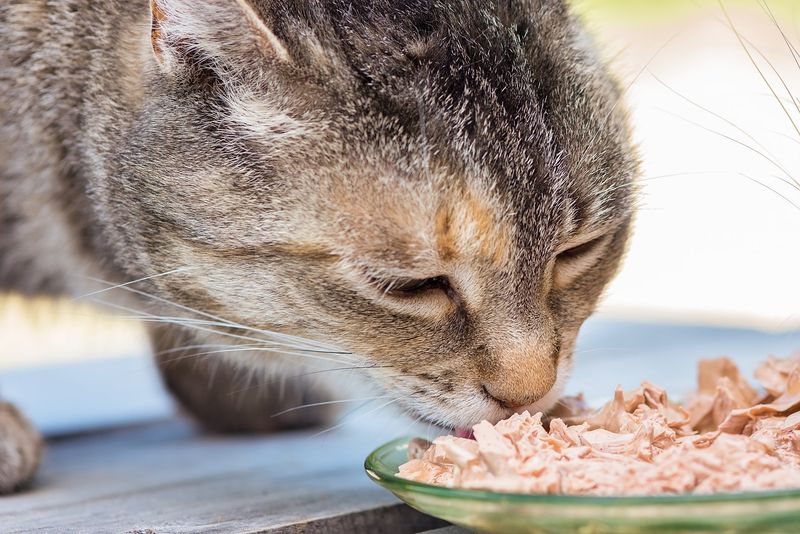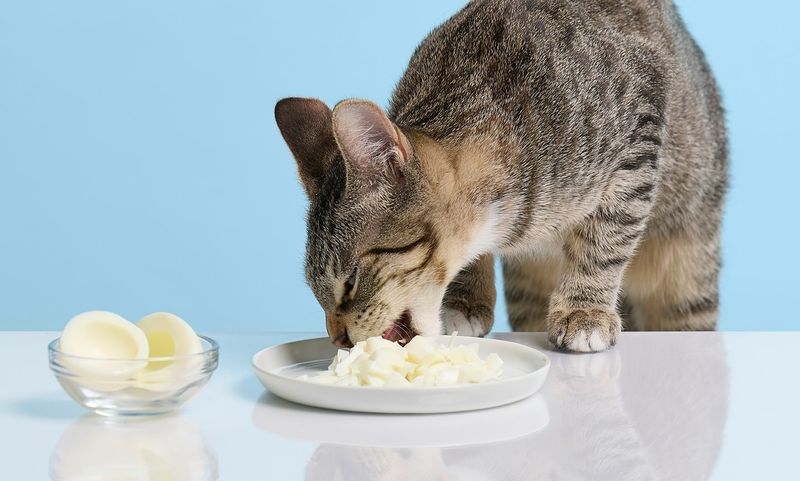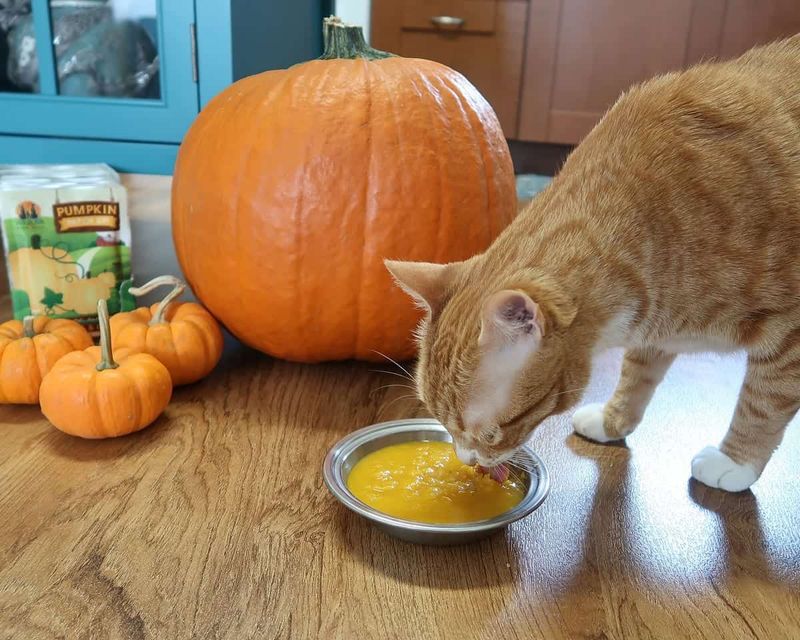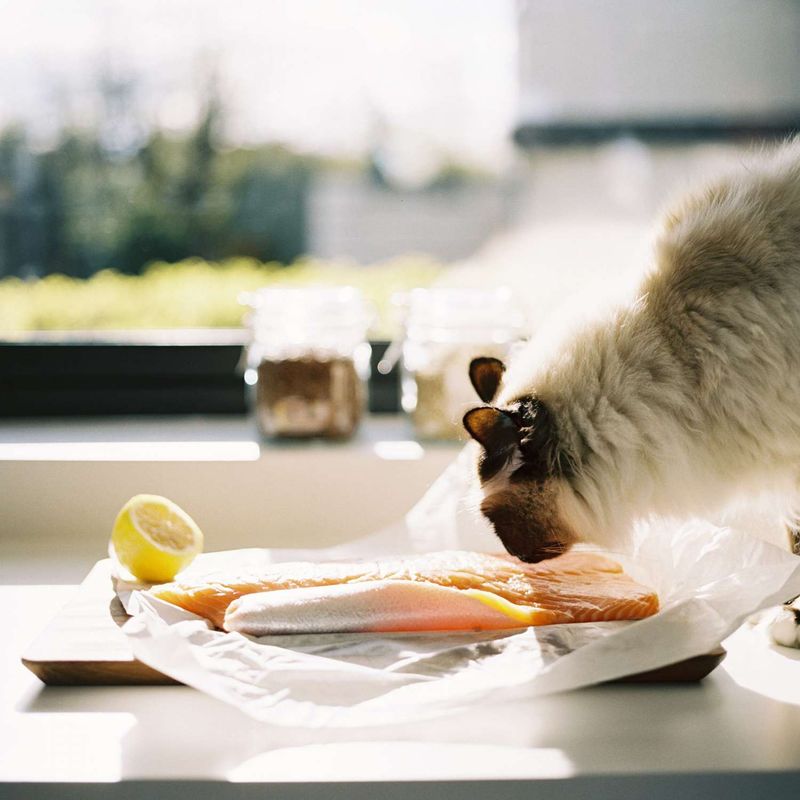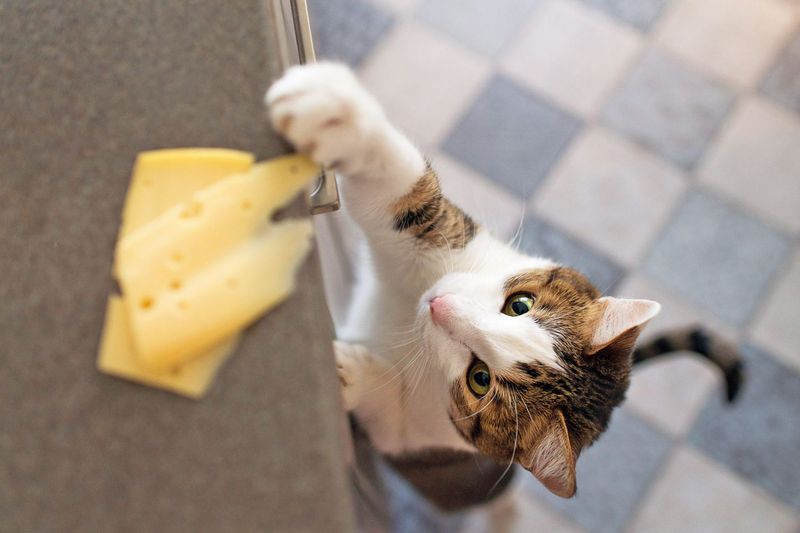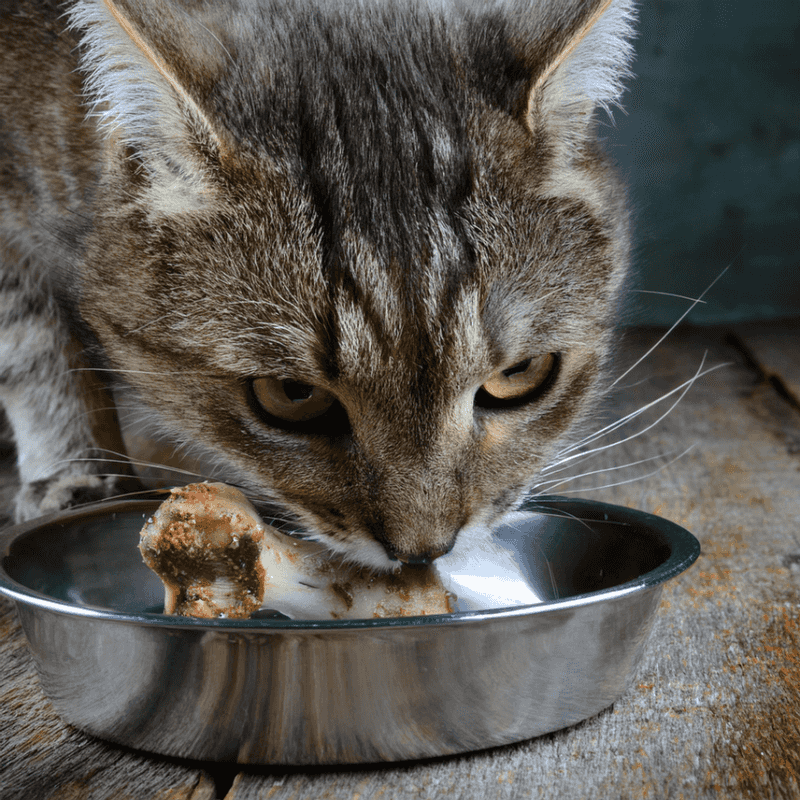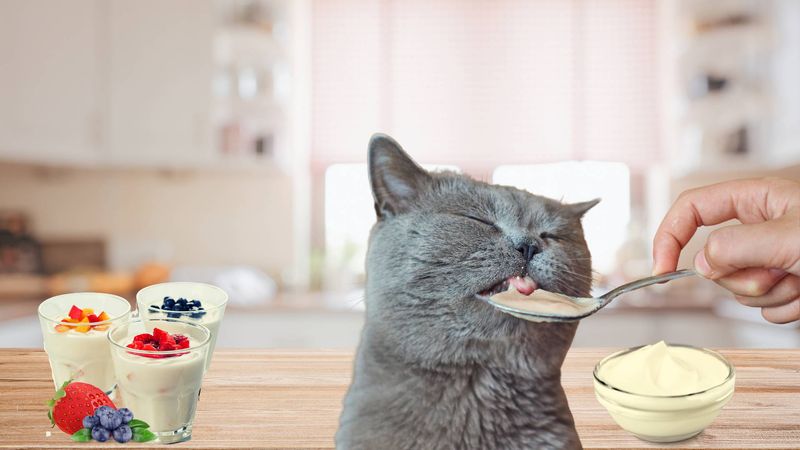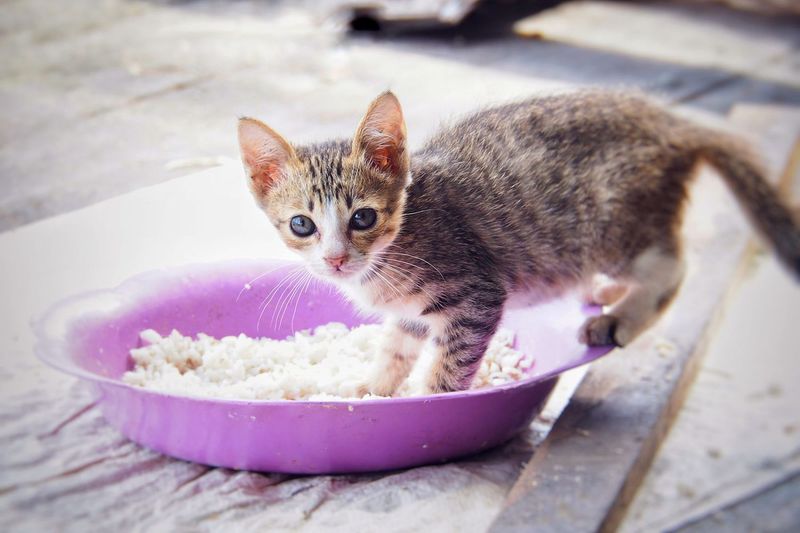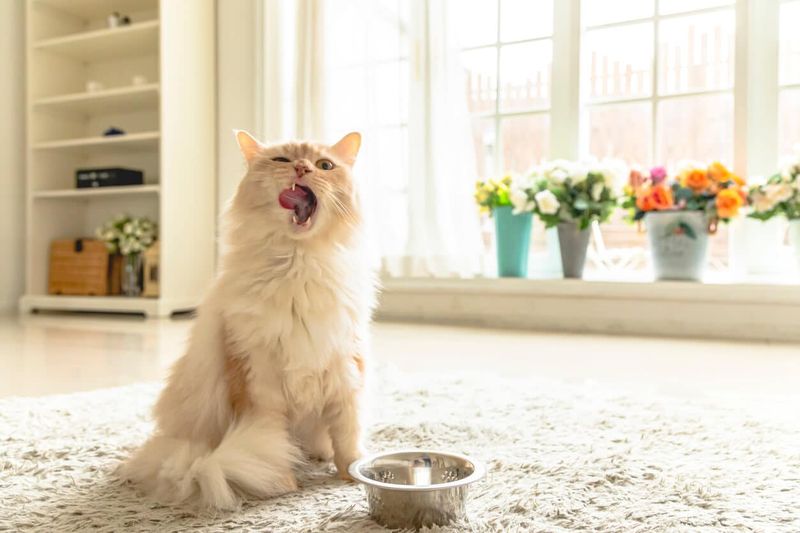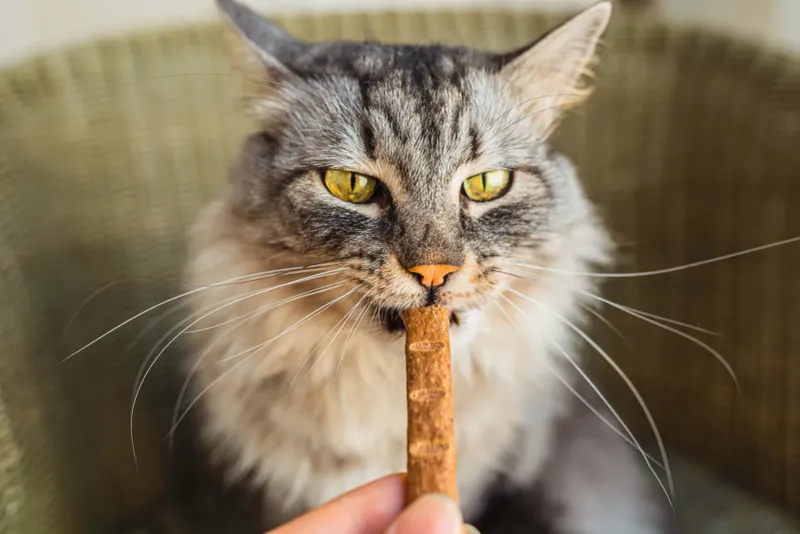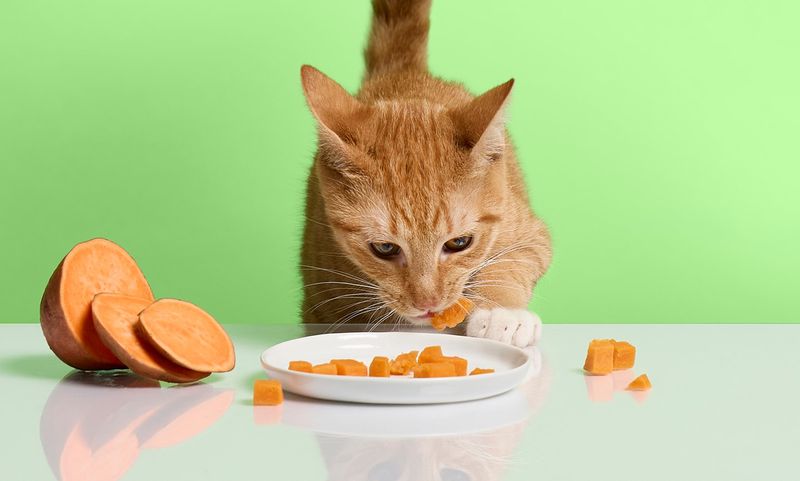📖 Table of Content:
When a cat isn’t feeling well, encouraging them to eat can become a real struggle. Their natural pickiness is heightened when they’re sick, making it difficult to get them to enjoy a meal. Finding the right foods to entice their appetite is key to helping them get back to their usual self.
Offering appealing options can make all the difference in sparking their interest in food. From aromatic dishes to soft textures, certain foods can help stimulate a cat’s appetite and encourage them to eat. The goal is to provide meals that not only taste good but also support their recovery process.
Various food choices can provide the necessary nutrients while tempting a sick cat to take a bite. By focusing on flavors and textures that appeal to their senses, it becomes easier to ensure they get the proper nourishment. Here are 15 food ideas to try when your cat refuses to eat.
1. Chicken Broth
Chicken broth is a comforting option that can entice your cat to eat. Its warmth and aroma can stimulate a cat’s appetite, making it more appealing. The high water content also helps keep your cat hydrated, which is especially important if they’re not drinking enough.
Make sure to choose a low-sodium broth or, better yet, prepare it at home to control the ingredients. Avoid adding onions or garlic, as these are toxic to cats. Offering a small amount in a bowl or drizzling it over their regular food can encourage them to start eating again.
2. Canned Tuna
The enticing smell and rich taste of canned tuna can quickly grab a cat’s attention. While it can be a helpful way to encourage a sick cat to eat, it shouldn’t replace regular meals, as it lacks the necessary nutrients. Stick to tuna packed in water without added salt, offering it alone or blending it with their everyday food.
Remember that too much tuna can lead to nutritional imbalances, so it’s best to use it as an occasional treat to spark their appetite.
3. Baby Food
Offering baby food made from meats such as chicken or turkey is a gentle way to encourage a sick cat to eat. The smooth, pureed texture is easy on their stomach and can be more appealing when they’re having trouble with solid foods. Be sure to pick varieties that don’t contain harmful ingredients like onions or garlic.
Introduce baby food by spoon-feeding or mixing it into their usual diet. This can be an effective short-term solution to stimulate their interest in eating.
4. Boiled Chicken
A classic option, boiled chicken is a cat favorite due to its simple and mild taste. It’s gentle on the stomach, making it perfect for cats dealing with digestive troubles. Just make sure to shred it into small pieces and avoid any seasonings for a safe meal.
Offering small portions throughout the day can help maintain their interest in food. This protein-rich option is a staple for encouraging eating without upsetting their delicate systems.
5. Wet Cat Food
When a cat is sick, wet food can be more enticing than dry kibble due to its moisture and flavor. The added moisture helps with hydration, and its appealing aroma can stimulate a lackluster appetite. Choose a high-quality, natural option and add warm water to boost its scent and make it more tempting.
Feeding wet food can provide the essential nutrients needed for recovery, while also ensuring they stay hydrated.
6. Scrambled Eggs
For a sick cat, scrambled eggs can be a gentle and nutritious food option. Full of protein, they offer important nutrients when your cat isn’t eating much. Prepare them without oils, butter, or seasonings to ensure they’re safe and easy to digest.
Offering small, frequent servings can help pique their interest, providing a protein boost that supports their health and recovery.
7. Pumpkin Puree
Pumpkin puree is a fiber-rich option that can aid digestion and entice your cat to eat. Its slightly sweet flavor and smooth texture make it appealing to many cats.
Choose plain, canned pumpkin without any added sugars or spices. It can be offered as a small side or mixed into their regular food to enhance flavor and appeal. This nutritious addition can help with constipation or digestive issues, encouraging better eating habits during recovery.
8. Cooked Fish
Salmon or whitefish, when cooked properly, can be an irresistible option for a cat with little appetite. The aroma and rich flavor are often enough to tempt even the pickiest eaters. Be sure to cook the fish thoroughly and remove any bones or seasoning before offering it to your cat.
Fish provides essential fatty acids and nutrients that support overall health and recovery. Offering small, bite-sized pieces can help entice a cat who’s reluctant to eat. This flavorful option can break the monotony of their regular diet, sparking their interest in food again.
9. Cheese
Cheese, in small amounts, can be a tasty and appealing treat for cats who aren’t eating well. Its strong flavor and creamy texture might tempt a reluctant eater.
Opt for mild varieties, such as cheddar or mozzarella, and offer it sparingly due to its high-fat content. Some cats may be lactose intolerant, so observe your pet’s reaction to cheese. Use cheese as an occasional treat to pique their interest and provide a calorie boost, but avoid making it a regular part of their diet.
10. Bone Broth
A nutritious option like bone broth can help stimulate a sick cat’s appetite, providing both flavor and hydration. The gelatin in the broth can ease digestive issues, making it ideal for cats with sensitive stomachs. Prepare it from animal bones, keeping it free of salt, onion, or garlic for a safe meal.
Serve it warm and offer it alone or pour it over other foods to enhance their flavor. This comforting liquid can be a powerful tool to encourage eating.
11. Yogurt
Plain, unsweetened yogurt can be a mild, soothing option for a sick cat with a sensitive stomach. The creamy texture and probiotics can help support digestion and ease discomfort. Offer small quantities and monitor your cat’s reaction, as some may be sensitive to dairy.
Incorporating yogurt as an occasional treat can provide a gentle way to nourish and hydrate, helping to maintain their interest in food during recovery.
12. Rice
Rice is a bland carbohydrate that can be mixed with other foods to encourage eating. Its mild flavor and soft texture make it suitable for sensitive stomachs. Offering plain, cooked rice can help bulk up meals without overwhelming a sick cat’s digestive system. Mix it with boiled chicken or broth for additional flavor.
This gentle option can support digestive health and provide energy, making it a useful component in a recovery diet.
13. Liver
Rich in vitamins and minerals, liver is a nutrient-packed option that cats often find irresistible. Its bold flavor makes it a tempting treat, but it should be offered in small amounts to prevent vitamin toxicity. Always cook it thoroughly and avoid any seasonings for a safe meal.
Incorporating liver into their diet occasionally can provide a nutritional boost and stimulate their interest in eating, especially when they’re feeling under the weather.
14. Cat Treats
Designed to be irresistible, cat treats are an excellent option for tempting a cat to eat. Their wide range of flavors and textures can easily spark interest in even the fussiest eaters. Just be sure to offer them in moderation to prevent overfeeding and ensure a balanced diet.
You can use them as a reward or mix them with regular food to enhance flavor. Offering treats can be a fun way to engage with your cat, providing both a nutritional boost and a positive eating experience during recovery.
15. Sweet Potatoes
Sweet potatoes aren’t just for humans! These vibrant orange tubers are packed with vitamins that can offer a nutritional boost for your sick cat. Their natural sweetness can make them more appealing to a cat that’s gone off their food.
Make sure to cook and mash the sweet potatoes thoroughly, avoiding any added spices or sugars. Introduce them slowly to see if your cat takes a liking to this unusual treat. Not only are they healthy, but they can also provide the much-needed comfort that your furry friend is seeking.

